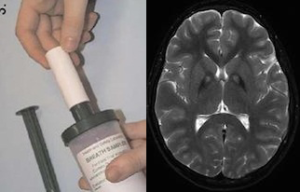Emory physiologist Malu Tansey and her colleagues are using recent insights into the role of inflammation in Parkinson’s disease to envision new treatments. One possible form this treatment strategy could take would be surprisingly simple, and comparable to medications that are approved for rheumatoid arthritis.

Malu Tansey, PhD
Understanding the role of inflammation in Parkinson’s requires a shift in focus. Many Parkinson’s researchers understandably emphasize the neurons that make the neurotransmitter dopamine. They’re the cells that are dying or already lost as the disease progresses, leading to tremors, motor difficulties and a variety of other symptoms.
But thinking about the role of inflammation in Parkinson’s means getting familiar with microglia, the immune system’s field reps within the brain. At first, it was thought that the profusion of microglia in the brains of Parkinson’s patients was just a side effect of neurodegeneration. The neurons die, and the microglia come in to try to clean up the debris.
Now it seems like microglia and inflammation might be one of the main events, if not the initiating event.
“Something about the neurons’ metabolic state, whether it’s toxins, oxidative stress, unfolded proteins, or a combination, makes them more sensitive. But inflammation, sustained by the presence of microglia, is what sends them over the edge,” Tansey says.
She says that several recent studies have led to renewed attention to this area:
- In vivo PET imaging using a probe for microglia has allowed scientists to see inflammation starting early in the progression of Parkinson’s (see figure below)
- Epidemiology studies show that taking ibuprofen regularly is linked to lower incidence of Parkinson’s
- Experiments with animal models of genetic susceptibility demonstrate that inflammatory agents like endotoxin can accelerate neurodegeneration
- Genomics screens have identified HLA-DR, an immune system gene, as a susceptibility marker for Parkinson’s (Emory’s Stewart Factor was a co-author on this paper)
Popping a few ibuprofen pills everyday for prevention and possibly damaging the stomach along the way is probably not going to work well, Tansey says. It should be possible to identify a more selective way to inhibit microglia, which may be able to inhibit disease progression after it has started.

Activated microglia in the midbrain and striatum of a Parkinson's patient
Targeting TNF (tumor necrosis factor), an important inflammatory signaling molecule, may be one way to go. Anti-TNF agents are already used to treat rheumatoid arthritis and inflammatory bowel disease. This January, Tansey and her co-workers published a paper showing that a gene therapy approach using decoy TNF can reduce neuronal loss in a rat model of Parkinson’s. More recently, her lab has also shown that targeting the gene RGS10 is another way to inhibit microglia and reduce neurodegeneration in the same models.
It is important to note that in the rat studies, they do surgery and put the gene therapy viral vector straight into the brain. She says it might possible to perform peripheral gene therapy with the microglia, or even anti-TNF medical therapy. In terms of mechanism, decoy (technically, dominant negative) TNF is more selective and may avoid the side effects, such as opportunistic infections, of existing anti-TNF agents.










